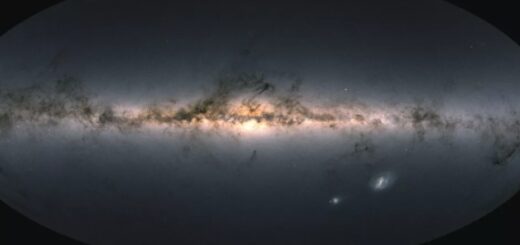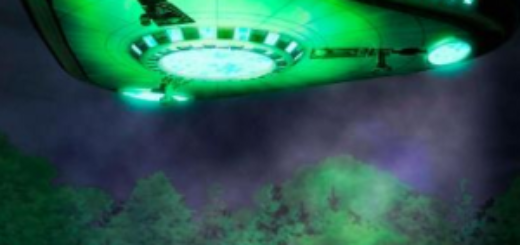Bright Unknown Object Observed Near Black Hole In Cygnus A Galaxy

– A bright unknown object has been discovered lurking near a black hole in galaxy of Cygnus A. Located about 800 million light-years from Earth, Cygnus A (3C 405) is a radio galaxy and one of the strongest radio sources in the Cosmos.
While pointing the Very Large Array (VLA) at this famous galaxy for the first time in two decades, astronomers were surprised to find a bright new object had appeared near the galaxy’s core. The object near the galaxy’s nucleus that did not appear in any previous published images.
The nature of the object is still unknown, but based on its characteristics astronomers think it’s either a very rare type of supernova explosion or, more likely, an outburst from a second supermassive black hole closely orbiting the galaxy’s primary, central supermassive black hole.
“This new object may have much to tell us about the history of this galaxy,” said Daniel Perley, of the Astrophysics Research Institute of Liverpool John Moores University in the U.K., lead author of a paper in the Astrophysical Journal announcing the discovery.
“The VLA images of Cygnus A from the 1980s marked the state of the observational capability at that time,” said Rick Perley, of the National Radio Astronomy Observatory (NRAO). “Because of that, we didn’t look at Cygnus A again until 1996, when new VLA electronics had provided a new range of radio frequencies for our observations.” The new object does not appear in the images made then.
See also:
Supermassive Black Holes Lurking In The Hearts Of Galaxies
Super Aliens May Already Live Inside Supermassive Black Holes
Monster Black Holes 10 Billion Times Greater Than The Sun
More About Astronomy
Astronomers want to observe the object’s future behavior to determine what it is, but they pointed out that the object has remained too bright for too long to be consistent with any known type of supernova.
Supermassive black holes are the most destructive force in the Universe, with a compact energy source of enormous strength and a mass of an order of magnitude between 105 and 1010 (hundreds of thousands and tens of billions) of solar masses!
While the new object definitely is separate from Cygnus A’s central supermassive black hole, by about 1500 light-years, it has many of the characteristics of a supermassive black hole that is rapidly feeding on surrounding material.
“We think we’ve found a second supermassive black hole in this galaxy, indicating that it has merged with another galaxy in the astronomically-recent past,” Chris Carilli of NRAO said.
“These two would be one of the closest pairs of supermassive black holes ever discovered, likely themselves to merge in the future.”
The astronomers suggested that the second black hole has become visible to the VLA in recent years because it has encountered a new source of material to devour. That material, they said, could either be gas disrupted by the galaxies’ merger or a star that passed close enough to the secondary black hole to be shredded by its powerful gravity.
“Further observations will help us resolve some of these questions. In addition, if this is a secondary black hole, we may be able to find others in similar galaxies,” Daniel Perley said.



 Creators of mankind
Creators of mankind Description of “Tall white aliens”
Description of “Tall white aliens” Where they came from?
Where they came from? About hostile civilizations
About hostile civilizations The war for the Earth
The war for the Earth “Tall white aliens” about eternal life
“Tall white aliens” about eternal life Video: “Nordic aliens”
Video: “Nordic aliens” Aliens
Aliens Alien encounters
Alien encounters The aliens base
The aliens base UFO
UFO Technology UFO
Technology UFO Underground civilization
Underground civilization Ancient alien artifacts
Ancient alien artifacts Military and UFO
Military and UFO Mysteries and hypotheses
Mysteries and hypotheses Scientific facts
Scientific facts


















